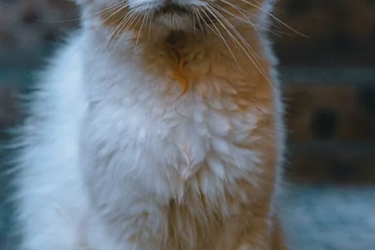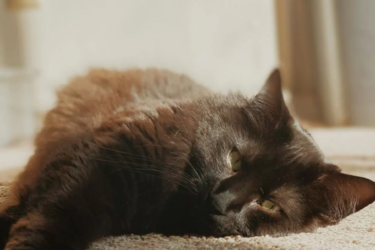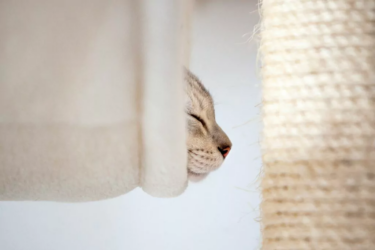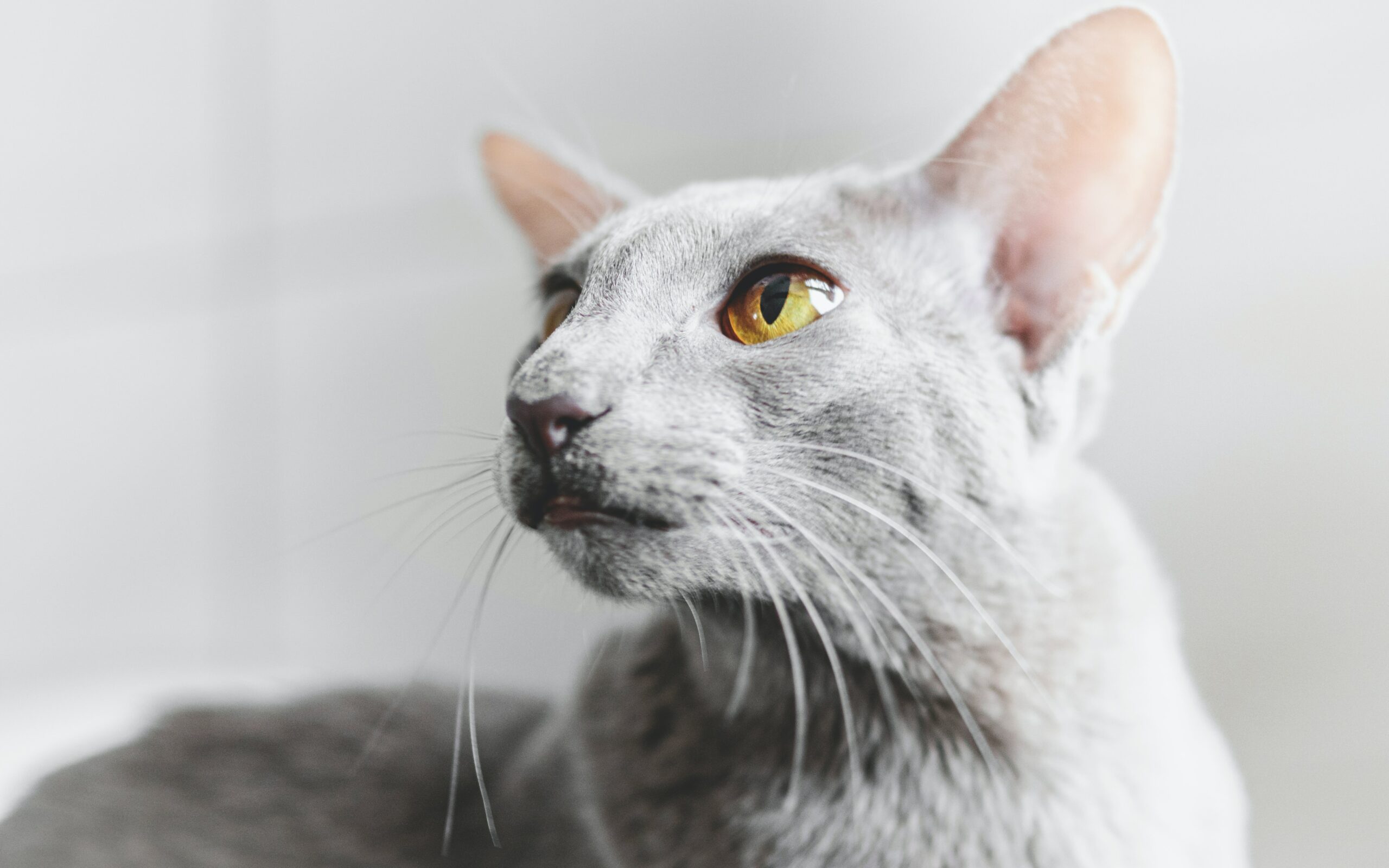
Intelligent, affectionate, and a bit reserved. That’s the Oriental Shorthair in a nutshell. But this breed has more to offer. What that is and how to care for this cat, we’ll tell you here.
In this blog:
- The origin of the Oriental Shorthair
- The personality of the Oriental Shorthair
- The appearance and coat of an Oriental Shorthair
- The health of the Oriental Shorthair
- How long does an Oriental Shorthair live?
- Caring for an Oriental Shorthair
- Buying an Oriental Shorthair (kitten)
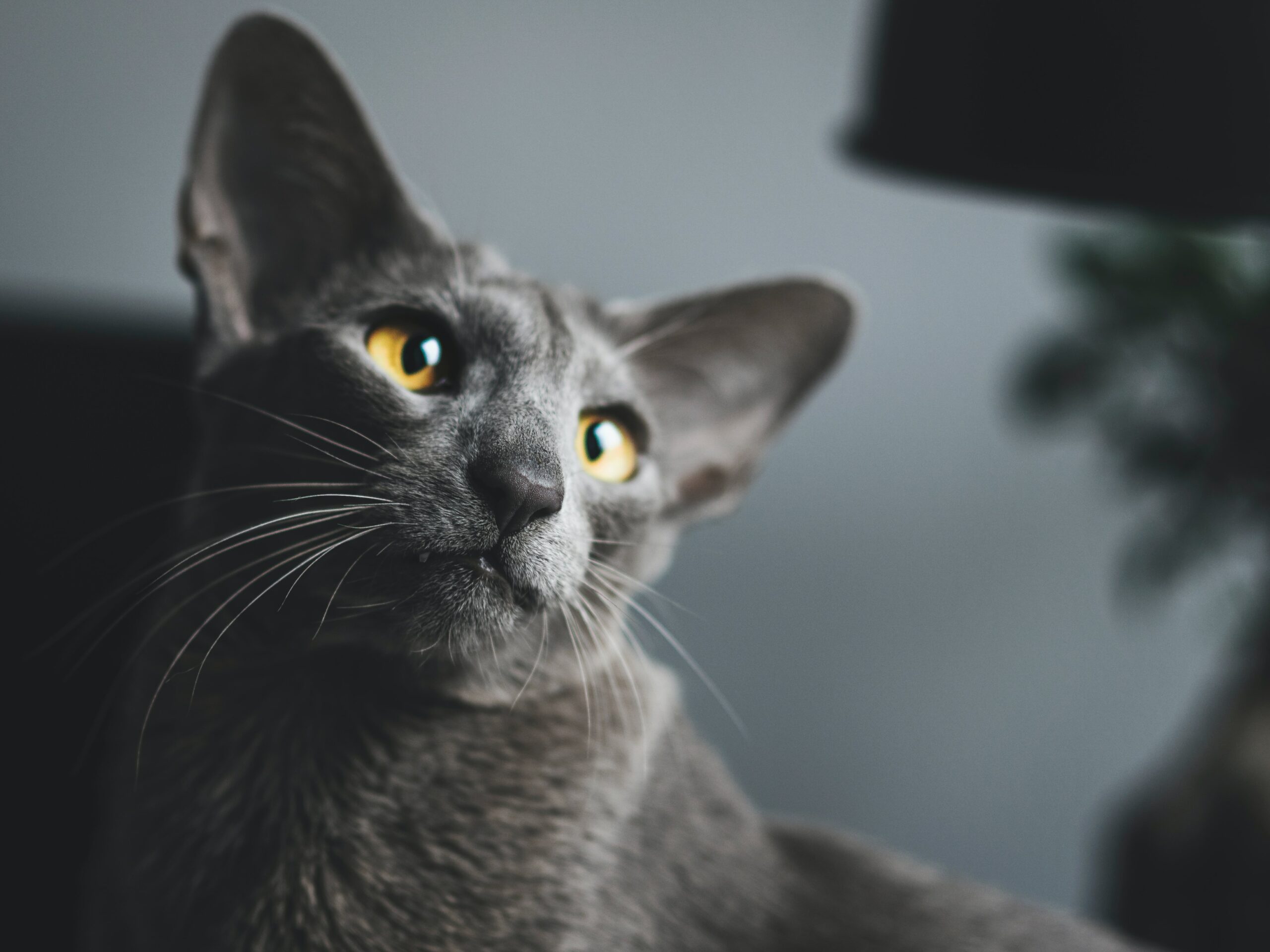
1. The Origin of the Oriental Shorthair
In the 1950s, British breeders crossed Siamese cats with other cat breeds, such as the European Shorthair, Russian Blue, and Abyssinian. They wanted to create a similar breed but with a solid-colored coat. And they succeeded. The result was the super cute Oriental Shorthair. The breed is actually very similar to the Siamese but comes in various colors and patterns. And with beautiful green eyes.
2. The Personality of the Oriental Shorthair
Oriental Shorthairs are loving and smart. Their favorite hobbies? Chatting – with you, but also with themselves – and being cozy with their owners. This breed is very talkative and forms a close bond with its family members. They can be a bit reserved, so it’s important to introduce an Oriental Shorthair to other family members and strangers from a young age. The Oriental Shorthair also doesn’t like being alone. Are you often away from home? Then this may not be the right breed for you. But if you still want one, consider getting two Oriental Shorthair kittens from the same litter – they can enjoy each other’s company.
Fun fact: The Oriental Shorthair is actually the same species as the Siamese cat. The only difference is that this cat doesn’t have partial albinism (lack of pigment in the skin), but a solid-colored coat.
These cat trees (with hammocks) are ideal for Oriental Shorthair cats!
3. The Appearance and Coat of the Oriental Shorthair
An Oriental Shorthair is – like a Siamese – slim, muscular, with long legs and a long tail. The males of this breed weigh between 3.5 and 5.5 kg, and females between 2.5 and 3.5 kg. The head is wedge-shaped, and the eyes are large, just like the ears. The nose is narrow. While Siamese cats often have blue eyes, the Oriental Shorthair has beautiful deep green eyes. However, blue eyes can also occur.
The coat of an Oriental Shorthair is silky, fine, and short. In terms of colors and patterns, this breed can come in a wide variety:
Solid colors:
- Black
- Brown
- Red
- Cream
- Cinnamon
- Fawn
- Blue
- Lilac
Patterns:
- Parti-color (solid color with white markings)
- Tortie or calico (mostly females)
- Tabby (spotted, mackerel, blotched, and ticked tabby)
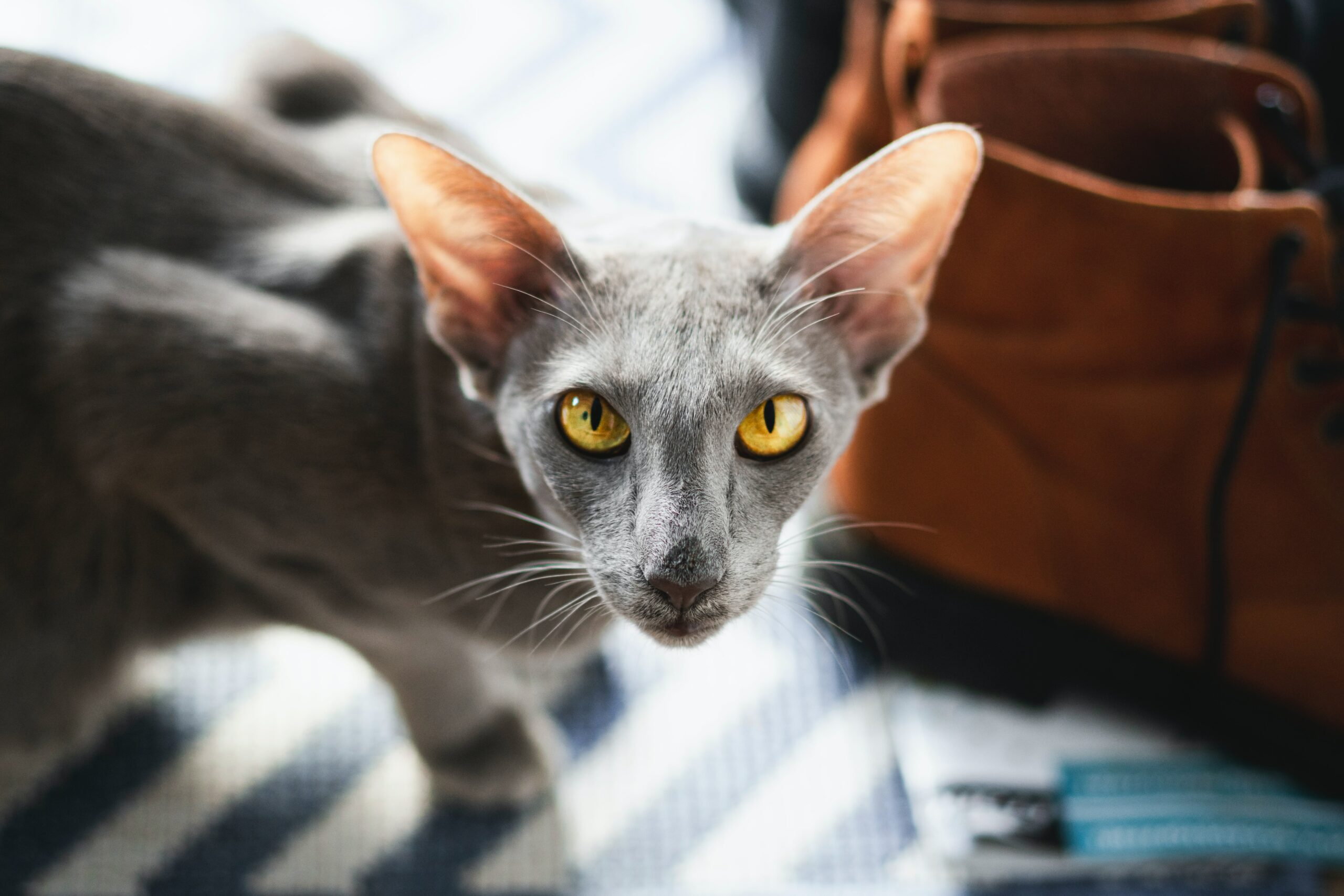
4. The Health of the Oriental Shorthair
Purebred cats are bred for unique traits. The Oriental Shorthair also has characteristics that make it special, such as:
- Long muzzle
- Slim and muscular
- The muzzle becomes longer with each generation, and the legs thinner
Do you think an Oriental Shorthair is a good fit for you? Then do thorough research on the health of this breed. Many purebred cats are prone to hereditary conditions. For example, Oriental Shorthairs have a high risk of developing amyloidosis (chronic kidney failure). It’s important to be aware of this.
If you want to bring a healthy cat into your home, it’s best to consult a veterinarian. You can also check the websites of Dier & Recht and the Dutch Food and Consumer Product Safety Authority for information about the breed’s health, whether it is permitted, and what rules apply to breeders.
Always buy an Oriental Shorthair from a reliable breeder, preferably one who is a member of a breed association. That way, you can be sure that the cat is healthy and well cared for. Also, ask the breeder for a health certificate or guarantee for extra peace of mind.
5. How Long Does an Oriental Shorthair Live?
If an Oriental Shorthair is well cared for and has no special diseases or conditions, it can live between 10 and 15 years.
Want to know what it’s like to have an Oriental Shorthair in your home? Bianca tells all about her cats in KattenPraat!
6. Caring for the Oriental Shorthair
This breed is naturally intelligent, curious, and athletic. Action and mental stimulation are very important for them to stay happy and healthy. Do you have an Oriental Shorthair? Make sure to challenge them sufficiently with interactive toys, puzzles, and fetching games. Oriental Shorthairs also love to seek attention and climb. A tall scratching post with challenging elements is great for these intelligent cats, as it allows them to burn off their energy.
Whether you have a regular cat or an Oriental Shorthair, you must always take good care of your cat. And you do this by ensuring that the home is always safe and that your cat has a place to retreat to when they need it. Love and sufficient attention are also important for Oriental Shorthairs, as well as protein-rich food. Also:
- Always fresh water
- Multiple clean litter boxes
- With high-quality litter
- A cat tree with a sleeping area and challenging toys
- Protection against worms, ticks, and fleas
- Regular visits to the vet for check-ups
- Vaccinations against feline diseases
Discover here what the typical cost of caring for a cat is
7. Buying an Oriental Shorthair
Want to buy an Oriental Shorthair? Go to a recognized breeder, preferably one who is a member of a breed association. This way, you can be sure you’re getting a healthy, well-socialized cat that has been bred in a humane way. Always ask for the papers, a health certificate, and check the parents of the kitten. Also, take a look at the living conditions: is it clean and homely, and are the parents present? That’s a good sign. Do not buy cats from platforms like Marktplaats, eBay, or from unscrupulous breeders.
An Oriental Shorthair from a good breeder costs around 1100 euros. Are you looking for a cat but don’t necessarily need a purebred? Consider checking animal shelters or adoption agencies. Many lovely cats are waiting for a good home.
And remember: you don’t have a cat for just a short time, but for its entire life. Are you ready to take good care of the animal and set aside money for its care and vet visits? Then the Oriental Shorthair could become your new best friend!
Read more about the playful American Bobtail
Disclaimer: Petrebels is not a vet or behaviourist: all content, information and tips on this blog are intended to inspire you and are informative in nature. Does your cat have complaints or problems and are you in doubt about your cat’s health? If so, always visit your vet or a behaviourist.
